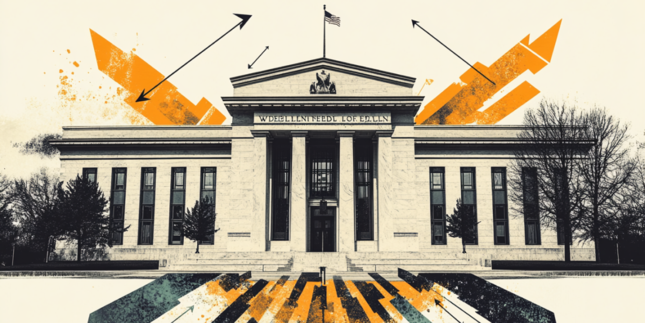If you are like most people, the savings earmarked for your retirement may be scattered among several different places. Today we’ll look at a few of those possibilities and discuss some alternatives.
The point of this discussion is to help you to see the entirety of your retirement asset base as a whole, but one with multiple components; and to think about ways to maximize the overall rate of return.
The first thing to do is to categorize those retirement assets that you currently own. These may fall into several categories:
-
Assets held in your own name or jointly with a spouse
- Brokerage accounts (containing stocks, bonds, mutual funds and/or ETFs)
- Mutual funds
- Hedge fund accounts
- Real estate (other than your home(s))
- Precious metals, gemstones, collectibles
- Partnership interests, stock in privately held companies, venture capital investments
- Annuities, whole life insurance policies
- Vested rights to old-style defined benefit pension plans (not many of these left!)
-
Assets held in a current employer’s retirement plan
- 401(k) for many corporate employees
- 403(b) for teachers and some others
- 457(b) for many government employees and some employees of non-profits
- Other retirement account sponsored by a current employer
-
Assets in plans like the above sponsored by former (not current) employer
-
Assets held in a tax-advantaged retirement account for you as an individual, which may have a bank, a brokerage, or another type of company as custodian. All of the following types of accounts are most often invested in mutual funds, although there are other possibilities.
- Traditional IRA
- Roth IRA
- SEP-IRA
- SIMPLE IRA
- Solo 401(k)
Making a complete inventory of the assets you have to work with is a necessary first step. For each one of these assets, you’ll need to know its current market value and an estimate of its rate of return. If you work with a financial adviser, they should be able to help with that. If not (and if not, congratulations on your initiative to manage your financial affairs personally!) this is homework that you’ll need to do. For rate of return estimates, look at previous years’ statements, going back as far as you can to get a picture of the rate of return in differing market conditions. One warning: for stocks and mutual funds, the last seven years have been a roaring bull market, a period of atypically high returns that we would not expect to be the norm going forward.
With this information listed on one page, you can now see the whole and its component parts.
The next step is to decide what needs to be changed, if anything. The goal is to have an asset base that provides an adequate return, while being properly protected against a bad market in any one area such as the stock market.
One example of what you would not want to see, unfortunately, is the situation that many people find themselves in. That is having all of your assets in a current or former employer’s 401(k), where it is invested in a couple of stock-based mutual funds. These funds (and all stock-based mutual funds, whatever their orientation) could be decimated by a stock market crash. And the nature of stock markets is to have bull markets alternating with crashes. So the next crash is always only a matter of time.
For that reason, we want to make sure that it is never the case that all of our retirement money is in stocks (or mutual funds and/or variable annuities, which also are entirely dependent on stocks). What we need is true diversification across entirely different asset classes, as well as a system of management that protects what we do have.
The process of selecting and managing your investments is entirely within your capabilities once you are educated on the subject. We’ll talk about more of the highlights in the future. Meanwhile, making the inventory and determining your starting point is one of the necessary first steps.
This content is intended to provide educational information only. This information should not be construed as individual or customized legal, tax, financial or investment services. As each individual's situation is unique, a qualified professional should be consulted before making legal, tax, financial and investment decisions. The educational information provided in this article does not comprise any course or a part of any course that may be used as an educational credit for any certification purpose and will not prepare any User to be accredited for any licenses in any industry and will not prepare any User to get a job. Reproduced by permission from OTAcademy.com click here for Terms of Use: https://www.otacademy.com/about/terms
Editors’ Picks

EUR/USD struggles for direction amid USD gains
EUR/USD is trimming part of its earlier gains, coming under some mild downside pressure near 1.1730 as the US Dollar edges higher. Markets are still digesting the Fed’s latest rate decision, while also looking ahead to more commentary from Fed officials in the sessions ahead.

GBP/USD drops to daily lows near 1.3360
Disappointing UK data weighed on the Sterling towards the end of the week, triggering a pullback in GBP/USD to fresh daily lows near 1.3360. Looking ahead, the next key event across the Channel is the BoE meeting on December 18.

Gold losses momentum, challenges $4,300
Gold now gives away some gains and disputes the key $4,300 zone per troy ounce following earlier multi-week highs. The move is being driven by expectations that the Fed will deliver further rate cuts next year, with the yellow metal climbing despite a firmer Greenback and rising US Treasury yields across the board.

Litecoin Price Forecast: LTC struggles to extend gains, bullish bets at risk
Litecoin (LTC) price steadies above $80 at press time on Friday, following a reversal from the $87 resistance level on Wednesday. Derivatives data suggests a bullish positional buildup while the LTC futures Open Interest declines, flashing a long squeeze risk.

Big week ends with big doubts
The S&P 500 continued to push higher yesterday as the US 2-year yield wavered around the 3.50% mark following a Federal Reserve (Fed) rate cut earlier this week that was ultimately perceived as not that hawkish after all. The cut is especially boosting the non-tech pockets of the market.
RECOMMENDED LESSONS
Making money in forex is easy if you know how the bankers trade!
I’m often mystified in my educational forex articles why so many traders struggle to make consistent money out of forex trading. The answer has more to do with what they don’t know than what they do know. After working in investment banks for 20 years many of which were as a Chief trader its second knowledge how to extract cash out of the market.
5 Forex News Events You Need To Know
In the fast moving world of currency markets where huge moves can seemingly come from nowhere, it is extremely important for new traders to learn about the various economic indicators and forex news events and releases that shape the markets. Indeed, quickly getting a handle on which data to look out for, what it means, and how to trade it can see new traders quickly become far more profitable and sets up the road to long term success.
Top 10 Chart Patterns Every Trader Should Know
Chart patterns are one of the most effective trading tools for a trader. They are pure price-action, and form on the basis of underlying buying and selling pressure. Chart patterns have a proven track-record, and traders use them to identify continuation or reversal signals, to open positions and identify price targets.
7 Ways to Avoid Forex Scams
The forex industry is recently seeing more and more scams. Here are 7 ways to avoid losing your money in such scams: Forex scams are becoming frequent. Michael Greenberg reports on luxurious expenses, including a submarine bought from the money taken from forex traders. Here’s another report of a forex fraud. So, how can we avoid falling in such forex scams?
What Are the 10 Fatal Mistakes Traders Make
Trading is exciting. Trading is hard. Trading is extremely hard. Some say that it takes more than 10,000 hours to master. Others believe that trading is the way to quick riches. They might be both wrong. What is important to know that no matter how experienced you are, mistakes will be part of the trading process.
The challenge: Timing the market and trader psychology
Successful trading often comes down to timing – entering and exiting trades at the right moments. Yet timing the market is notoriously difficult, largely because human psychology can derail even the best plans. Two powerful emotions in particular – fear and greed – tend to drive trading decisions off course.
